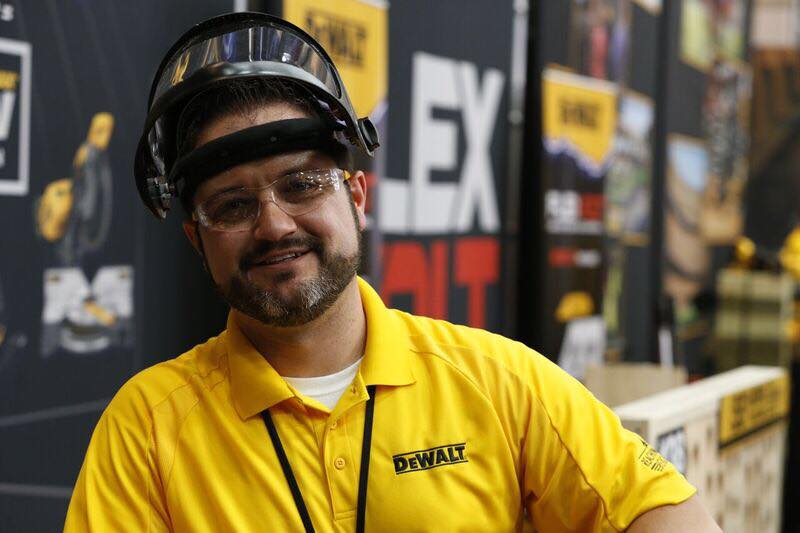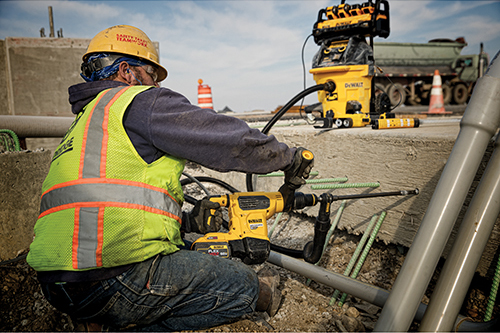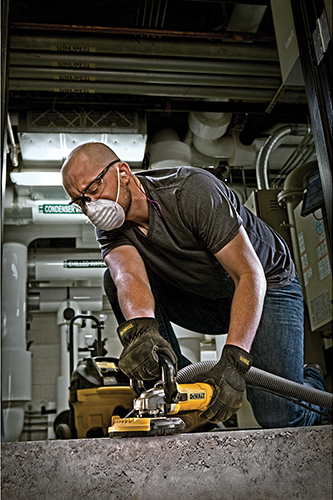Some construction industry members stirred up dust upon issuance of March 2016’s OSHA Ruling 1926.1153, a regulation to drastically reduce worker exposure to respirable crystalline silica, a byproduct of stone, brick and concrete found on job sites. Nevertheless, compliance to the rule, which calls for reducing exposure from 250 micrograms of silica per cubic meter to 50 micrograms over eight-hour shifts, is due to take effect in just weeks, Sept. 23.

If they have yet to comply with the rule, contractors wishing to do so by implementing engineered controls may want to consult with DEWALT, a leading industry supplier of power and hand tools involving stone, brick and concrete. The Towson, MD-based supplier offers a full suite of OSHA-compliant, silica-related solutions and is expert in executing them. As OSHA’s deadline looms, “We’ve seen a huge uptick in sales among our network of retailers and distributors,” said DEWALT Senior Product Manager Nathaniel Pellerin. “In some instances, sales have doubled to tripled.”
All told, the rule impacts 2 million construction workers who may encounters respirable crystalline silica, a dust that results from drilling, cutting, crushing or grinding silica-containing materials, according to OSHA. Some industry groups have expressed concern about the cost and difficulty of implementing the rule. However, prolonged exposure to high levels of crystalline silica has been linked to conditions ranging from silicosis — a potentially fatal lung disease — to lung cancer, chronic obstructive pulmonary disease and kidney disease.
As with other OSHA-compliant engineered controls, DEWALT‘s solution includes shrouds, dust extractors and dust minimizing tools, in this instance for activities involving drilling, from chipping and demolition and SDS Max to spline drilling to SDS + drilling. The line also presents solutions for grinding, including surfacing and tuck/pointing cutting.
DEWALT‘s surface grinding solution, for instance, includes a shroud and a dust port that connects to a dust extractor equipped with a filter cleansing mechanism capable of achieving 99% filtering efficiency and offers OSHA Table 1 compliancy for up to 6” wheels based on the required air speeds of 25 cubic feet per minute per inch of wheel, according to Pellerin.
At the heart of DEWALT‘s solution are its extractors DWV010 and DWV012. Among other functions:
- Both provide the required airflow for drilling and hammering operations.
- Both ship with HEPA filters, which have an efficiency of 99.97% of all particles greater than or equal to 0.3 microns.
- Both have timed automatic filter cleaning, with dual filters pulsing automatically, and regularly, to prevent filter blinding and maintain efficiency.

The DEWALT line also incorporates Airlock™, a universal system that connects tools to dust extraction shrouds to minimize job site clean-up while reducing the requirement for tape to be used as secure shrouds and hoses, as seen
On the horizon is a cordless dust extractor for rotary hammers, Pellerin added.
DEWALT first introduced its dust containment line in 2012, a year before OSHA proposed 1926.1153, as part of the enterprise’s “PERFORM AND PROTECT ™.” line of tools to provide a high level of one or more of the following – dust control or low vibration – without sacrificing performance. In addition to dust containment, the suite of tools improves torque control, thereby alleviating bind up in normal drilling or cutting operations. The tools also operate at lower vibrations – a 15% reduction..
“The PERFORM and PROTECT ™ products resulted from extensive field research. “We spend a lot of time with our customers and end users to help find solutions to applications they encounter regularly.” Pellerin said. In 2012, silicosis figured less in the introduction of dust containment features than requests by contractors for equipment that would assist in cleaning sites and prevent dust from disturbing neighbors of project sites.

When OSHA issued 1926.1153, DEWALT was at the ready. Since then, the enterprise has spent considerable time and energy educating distributors, retailers and contractors about both the rule and the role its products play in achieving compliance, according to Pellerin. “We’ve conducted a grassroots campaign throughout our company.”
The majority of its dust containment equipment is fairly simple to attach or connect to existing tools, he said, noting that the firm typically “tries to ease cumbersome installations by providing solutions that are as simple and straight forward as possible.”
“DEWALT’s LINE PROVIDES SOME OF THE INDUSTRY’S MOST REASONABLY PRICED EQUIPMENT, WITH EXTRACTORS STARTING AT $400 PER UNIT.”
– Nathaniel Pellerin, Senior Project Manager, DEWALT
Contractors, of course, will have to factor cost into compliance. “Depending on the size of the operation, the rule could be costly to implement, considering that every worker doing work with potential silica exposure could require extractors and shrouds,” Pellerin acknowledged. “DEWALT‘s line provides some of the industry’s most reasonably priced equipment, with extractors starting at $400 per unit,” he said. “By comparison, some of our competitors start at $1,000.”
Payback, however, also arrives in the form of reduced maintenance. “There’s much less clean-up at the end of the job,” Pellerin said. “Dust is a big killer of power tools. If you can collect it before it accumulates in tools, the tool life increases.”
This article is sponsored by DEWALT. To learn more about DEWALT dust containment solutions, click here.

Discussion
Be the first to leave a comment.
You must be a member of the BuiltWorlds community to join the discussion.